
More Helpful Content
Manufacturers must take care of lots of things. Most firms are in the competition to find the lowest-cost materials and reduce operational costs as much as possible. It also might be tough to contemplate every step your goods take to achieve completion, from the workforce to the distribution network to what occurs on the manufacturing floor.
However, raw material inventory management can assist you in keeping track of almost everything. We will stay with you till the end of this article to provide you with everything related to raw materials inventory and what you need to know to manage it from theory to practice.
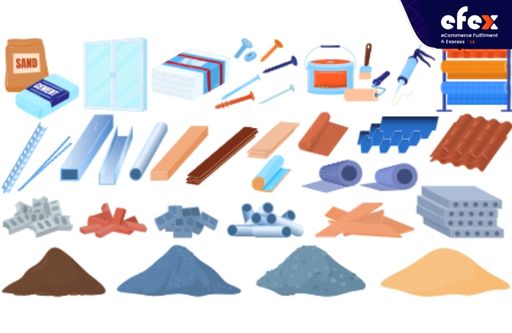
The entire worth of unprocessed materials used to manufacture your products is referred to as raw materials inventory. For instance, if you make a T-shirt, the raw materials inventory that you need can be fabric, threads, and yarns. Even if the raw materials inventory has not been produced yet, it is still necessary to account for it when developing and monitoring your financial paperwork. Raw materials are classified into two types, including direct materials and indirect materials.
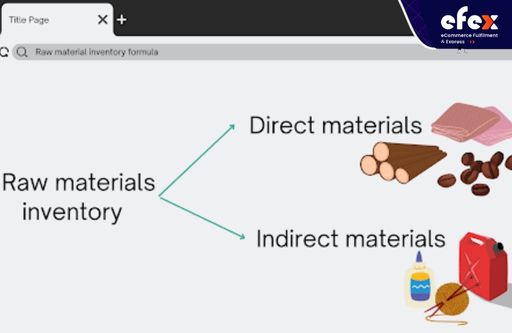
- Read More: Order Management System: Definition, Process And Value
- Read More: Order Management System For Ecommerce: Definition, Key Effect, Benefit
Determining the raw material inventory is critical to managing raw material inventory, and it is thankfully rather straightforward. There are three values and four steps that are used to determine it.
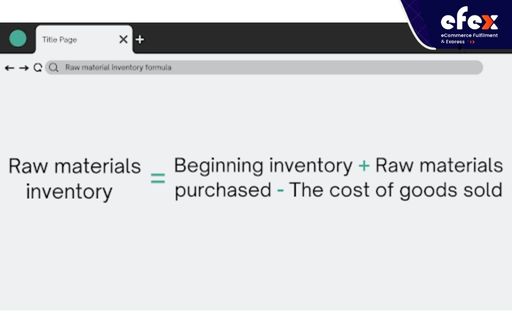
It is critical to decide on the period for which you will be looking for numbers. For instance, if a corporation calculates its raw materials inventory per 3 months for its financial periods, the calculation values would be from the previous 3 months of operations.
The worth of a business’s initial raw materials inventory may be determined by combining all direct and indirect raw materials from the initial of a specific period and then adding up their expenses to determine their entire value. This represents the preceding accounting period’s closing raw materials inventory.
Keep note of any raw materials acquired during the set period and calculate the total. This will help you to determine the worth of raw materials purchased. Then double that figure by the cost of establishing raw materials inventory.
Lastly, to compute the raw materials inventory, add the total expenses of all completed items and products sold throughout the specified period to the total of beginning raw materials and raw materials required.
Managing raw materials inventory is crucial for gaining a better understanding of how your products are made, what puts into them, how much it costs, and how you can optimize all of those elements. It also has several advantages, such as eliminating waste and waiting time. You may determine the amount of each raw material you require by computing your raw material inventory.
You may utilize this knowledge to begin ordering a quantity closer to your need, avoiding waiting time and wastage. Raw materials inventory investment might also help you optimize delivery times. By reducing the ordering of the raw material and producing, you may become a more reliable producer.
As you can see, managing raw materials inventory effectively can be a challenging task. There are a few factors to think about while enhancing your raw materials inventory management.
Besides optimizing raw materials inventory management, implementing a strategic control system that includes demand planning can assist you in maintaining appropriate inventory levels at any time.

The only way to have the proper quantity of raw material supplied when you require it is to gather data from your sales, manufacturing lines, and any other point in your supply chain. It is feasible to accomplish this using inefficient spreadsheets, but having to make continuous manual upgrades might be tough.
You may understand how to compute the worth of your raw materials, but this does not imply that you have the correct costings regarding how much it takes to make your products.
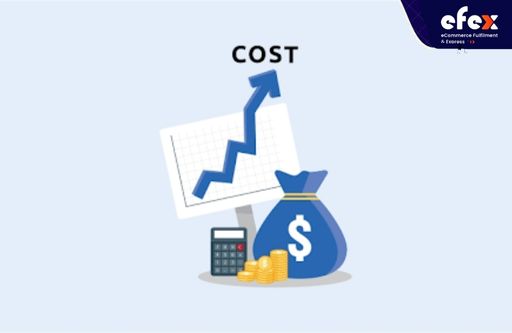
Manufacturing overheads, labor utilized in production, and raw materials are all expenditures you should keep track of. These costs frequently alter according to a variety of reasons. Tracking these expenditures alone will take a long time and be challenging. As a result, many firms rely on ERP manufacturing software to track and manage their raw materials inventory.
Raw materials inventory management may grow complicated, including various tactics and strategies, especially for big manufacturing companies. Let’s take a glance at some techniques that can help you not go into trouble when managing raw material inventory.
Businesses often begin with finished product inventory monitoring, then move on to basic raw materials inventory management, and then to more complicated work-in-progress management. The advice for this is that you should not jump to the latter right away.

Despite managing inventory well having many advantages, it also has a price, which is the time and resources required to maintain it functioning and up-to-date. As a result, if feasible, begin with basic raw material inventory management and don’t attempt to monitor different phases of manufacturing right away.
You just simply inventory your raw ingredients and final goods. It is preferable to have something basic that works well rather than something sophisticated that does not operate at all. Keep things simple and only add raw inventory management complications when there is a compelling business necessity.
The quantity of goods kept in a warehouse to defend against increases in demand or shortfalls in supply is referred to as safety stock. A proper reorder point guarantees that your company’s safety stock levels are never depleted. For raw materials utilized in manufacturing, most businesses follow some minimum inventory guidelines. Manufacturers usually fail to estimate raw materials consumed regularly. Therefore, these raw materials inventory levels are out of the current.

All of the following circumstances should cause an adjustment:
Besides, remember to alter safety stock and reordering point levels to adjust for different seasons, such as the forthcoming Christmas season. Maintaining these levels guarantees that you always maintain the proper quantity of raw materials inventories in your warehouse, preventing you from having too much cash held up.
- Read More: How to calculate inventory turnover: Formula and example
Having adequate raw materials inventory in place somehow doesn’t imply that you must trace every material used in your manufacturing. For instance, various indirect materials that are inexpensive and normally purchased in large quantities by the box might be used throughout the manufacturing process.
It is often preferable not to include such things on your materials bill. Hence, expense them at the moment of purchase rather than tracking every item utilized in manufacturing. It is critical to include the high-cost raw materials inventory in a manufacturing recipe earlier so that you can determine whether it is a profitable product. Do not waste your time-saving pennies and concentrate on what has the greatest impact on your margins.
Your company is different from others, and what works for one company may not work for the other. The fundamental guiding concepts are simple, straightforward, and free. There is no absolute devotion to a single technique. It is the cornerstone to overcoming any difficult circumstance for your manufacturing company. Use what works and throw away the rest.

The idea for you is to utilize all of the resources available to you to develop your own production style. The secret recipe to your best raw materials inventory strategy can be found. That is how contemporary firms may succeed.
Below are 7 best practices to start with raw materials inventory management. You may confidently adopt raw materials inventory management if you adhere to these guidelines.
This is the first and the most crucial step to implement a raw materials inventory management system. There are several options available coming with their own set of advantages that will improve the accuracy, automation, and frequency of your raw materials inventory computations.
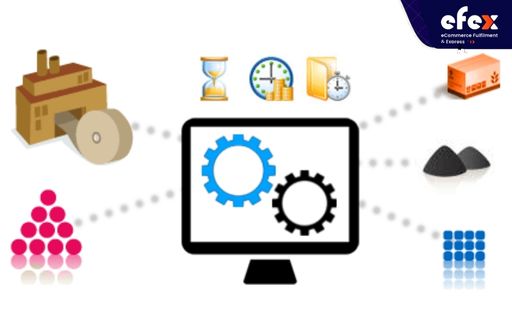
Another important aspect of making raw materials inventory management effective is to use a data-driven strategy. It all comes down to having the appropriate data and putting it to use when calculating raw materials inventory. To become data-driven, you must gather data often and routinely, covert it in meaningful ways, and comprehend how it fits into the larger picture of your organization.
You should also follow up on overstock and understock as well. These problems should be rare if you manage your raw materials inventories correctly. On the other side, if you continue to have stocking issues despite computing raw material inventory, you may have to reassess your raw inventory management strategy.
The other suggestion is to keep your company automated. For understandable reasons, automation is critical to any data-driven approach. It provides real-time visibility into your manufacturing floor without the need for human counting. It is also essential for maintaining as much accuracy as feasible while accounting for factors such as demand estimation. Do not miss this since it can influent significantly on managing raw materials inventory.

Attempting to account for every possibility is a common pitfall when undertaking raw materials inventory management. Although you should strive for precise calculations and include aspects such as demand forecasts in managing your raw materials inventory, you should not take into account all pieces of data. Since once you do, you may become overloaded and fail to see a meaningful return on your efforts.
Keep in mind that raw material inventory does not represent the be-all and end-all of your production expenses. It does not take into consideration important aspects such as labor expenses or production overheads. Tracking your entire production expenses might assist you in gaining broad insight into your operations.

When you are focused on original data, it is easy to lose sight of quality control. However, even though quality control is not a quantifiable quantity like raw material inventories, it still has an impact on production timelines and sales. Never be afraid to reject or return inferior materials, and never cut shortcuts.

Let’s look at this example to understand how the raw material inventory is calculated. Assume your fashion business was attempting to assess your raw materials inventory for the previous 3 months, you would first determine the value of your inventory at the start of the 3 months, that was $50,000 and then proceed from there. The system would then compute the entire cost of raw materials acquired during the previous 3 months, which was $45,000 in total.
Finally, you would determine the cost of products sold, which would be $35,000 in 3 months. Your raw material inventory would therefore be:
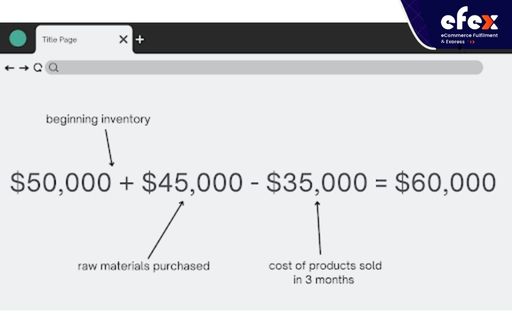
Raw material inventory management has a significant influence on your business’s overall growth. This is due to the fact that they are reported as a current asset on your financial statements. It strongly impacts cash flow and end-of-period financial performance. Thus, keeping an eye on raw material inventories may give your business a major competitive edge and also a cost-benefit.


